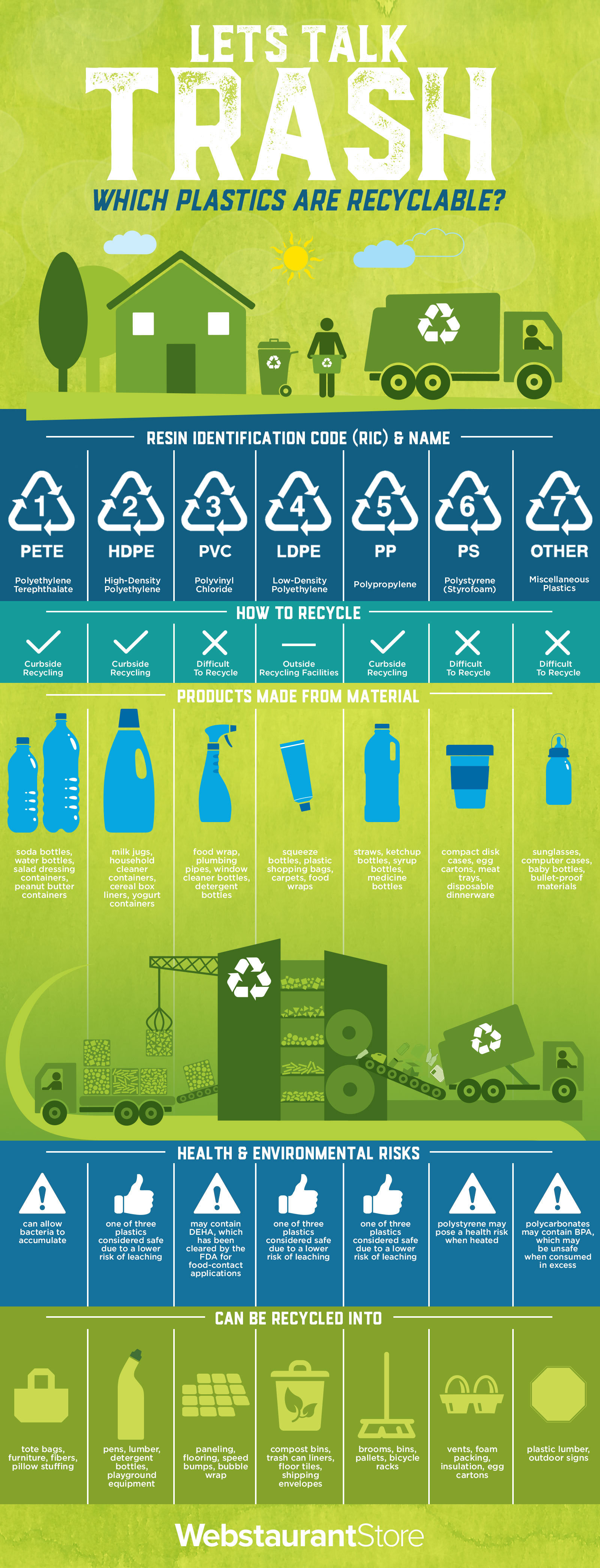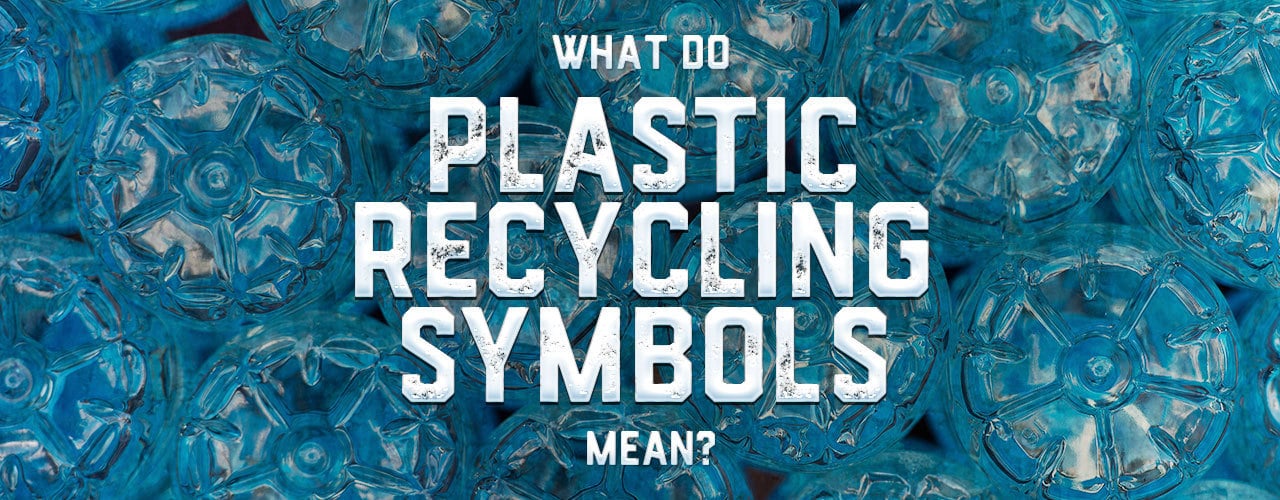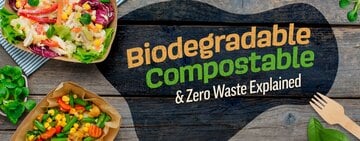What Do Plastic Recycling Symbols Mean?
Last updated on May 23, 2016Nora FulmerMany foodservice businesses are interested in recycling the plastic bags and containers they use to store, prepare, and keep their food fresh. However, it can be difficult to determine what can be recycled and how to properly recycle these materials. Check out the infographic below to learn how plastic recycling numbers and symbols can help you determine how to recycle your waste, potential risks of each plastic, and what these products are recycled into.
What Are the Seven Main Plastics?
The seven main types of plastic resins are polyethylene terephthalate (PETE), high-density polyethylene (HDPE), polyvinyl chloride (PVC), low-density polyethylene (LDPE), polypropylene (PP), and polystyrene (PS). The seventh category is designated as “other,” which can include polycarbonate resins, acrylic, polyactic fibers, nylon, and fiberglass, just to name a few.
Where Did Plastic Recycling Symbols and Numbers Come From?
To determine which type of plastic a container is made of, you should look for its Resin Identification Code (RIC), which is the number (between 1 and 7) within the triangular recycling symbol located on each plastic product. This plastic recycling code system was introduced by the Plastics Industry Trade Association (SPI) in 1988 to assist communities that were implementing recycling programs.
These recycling numbers will also help you determine if that type of plastic will be accepted by your local recycling programs. If you’re interested in learning more about recycling plastic, check out the infographic below.

PETE (Polyethylene Terephthalate)
Soda and water bottles, salad dressing containers, and peanut butter jars are typically made out of PETE plastic. It can be recycled into products such as tote bags, furniture, fibers, and pillow stuffing.
- How to Recycle: Curbside recycling
- Health and Environmental Risks: Can allow bacteria to accumulate
HDPE (High-Density Polyethylene)
HDPE plastic can be found in milk jugs, household cleaner containers, cereal box liners, and yogurt containers. It can be recycled into products such as pens, lumber, detergent bottles, and playground equipment.
- How to Recycle: Curbside recycling
- Health and Environmental Risks: One of three plastics considered safe due to a lower risk of leaching
PVC (Polyvinyl Chloride)
PVC plastic can be found in food wrap, plumbing pipes, window cleaner bottles, and detergent bottles. It can be recycled into paneling, flooring, speed bumps, and bubble packaging.
- How to Recycle: Difficult to recycle; requires mechanical or feedstock recycling
- Health and Environmental Risks: May contain DEHA, which has been cleared by the FDA for food-contact applications
LDPE (Low-Density Polyethylene)
LDPE plastic can be found in squeeze bottles, plastic shopping bags, carpets, and food wraps. It can be recycled into compost bins, trash can liners, floor tiles, and shipping envelopes.
- How to Recycle: Outside recycling facilities
- Health and Environmental Risks: One of three plastics considered safe due to a lower risk of leaching
PP (Polypropylene)
PP plastic can be found in products such as straws, ketchup bottles, syrup bottles, and medicine bottles. It can be recycled and made into products such as brooms, bins, pallets, and bicycle racks.
- How to Recycle: Curbside recycling
- Health and Environmental Risks: One of three plastics considered safe due to a lower risk of leaching
PS (Polystyrene/Styrofoam)
PS is found in compact disk cases, egg cartons, meat trays, and disposable dinnerware. It can be recycled into vents, foam packaging, insulation, and egg cartons.
- How to Recycle: Difficult to recycle; check with your local recycling site for drop-off options or use a mail-in service
- Health and Environmental Risks: Polystyrene may pose a health risk when heated
Miscellaneous Plastics
Miscellaneous plastics refers to nylon, styrene, and fiberglass to name a few. It can be found in items such as sunglasses, computer cases, baby bottles, and bulletproof materials. These miscellaneous plastics can be recycled and made into products such as plastic lumber and outdoor signs.
- How to Recycle: Difficult to recycle
- Health and Environmental Risks: Polycarbonates may contain BPA, which may be unsafe when consumed in excess



